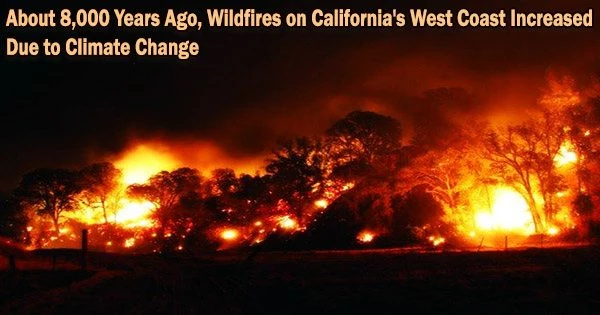In order to better understand future climate trends, scientists are attempting to unearth and examine the information from the past. With the use of mineral deposits found in White Moon Cave in Northern California, researchers have been examining the effects of the abrupt drop in global temperatures that took place around 8,200 years ago, the so-called 8.2-kiloyear event.
According to recent evidence, wildfires in California were closely related to oscillations between high wetness and aridity. The participating researchers from Johannes Gutenberg University Mainz (JGU) in Germany, Vanderbilt University in Nashville, USA, and Northumbria University in Newcastle upon Tyne in the UK have concluded that such events are likely to become more common in the face of human-induced climate change. The corresponding article has been published recently in Nature Communications.
Stalagmites as a valuable archive of climate data
Our seasons, water supplies, plants, and soil are already obviously impacted by climate change, as are their repercussions. In semi-arid areas, such as those in the west of North America, wildfire rates and intensities are already higher than what might be predicted based on historical data.
It is beneficial to have a deeper understanding of the historical context in order to forecast potential future events. Chemical compound traces have been preserved in readily datable climate archives that span thousands of years. These substances shed light on the current environmental circumstances as well as continental and regional climatic changes.
We are likely to witness an increasing frequency of both climate whiplash and wildfire activity because of human-made global warming. The climate in the region in question is thus progressively coming to resemble that of 8,000 years ago, although under very different circumstances. The climate whiplash back then was caused by natural environmental variations. Today it is us humans who are wielding the whip.
Julia Homann
Speleothems, which are a variety of mineral deposits that collect in caves, offer one of the most dated and comprehensive climate archives of this kind. As a result of their consistent growth pattern, stalagmites are of special relevance in this context.
The team of researchers from Mainz, Nashville, and Newcastle was able to reconstruct fire activity and vegetation composition in the California Coast Range during the 8.2-kiloyear event by examining the content of two novel marker substances, namely levoglucosan and lignin oxidation products (LOPs), in a stalagmite. Several hundred years passed during this chilly period.
Pollen study of early Holocene deposits in the Swiss Alps was the first to find evidence of the event, and later, ice cores from Greenland were also found to contain evidence. Further research has revealed that precipitation rates were significantly more varied than usual at this time in western North America.
These kinds of erroneous climate-related shifts are typical of a condition known as climatic whiplash. Many scientists concur that as a result of global warming, humanity will see more “climate whiplash” episodes.
Hydroclimate fluctuations result in more fire activity and more woody vegetation
“The results we have now published suggest that both vegetation composition and wildfire activity were directly linked to this climate whiplash event,” explained Julia Homann, a doctoral candidate in the research group of Professor Thorsten Hoffmann at Mainz University.
Levoglucosan concentrations that are higher imply increased fire activity, but different LOP compositions show a change in vegetation type during the 8.2-kiloyear event. Stronger hydroclimate variations, or a significant climate whiplash, were the direct causes of the changes that were seen.
“We are likely to witness an increasing frequency of both climate whiplash and wildfire activity because of human-made global warming,” said Homann. The climate in the region in question is thus progressively coming to resemble that of 8,000 years ago, although under very different circumstances. “The climate whiplash back then was caused by natural environmental variations. Today it is us humans who are wielding the whip,” concluded Homann of JGU’s Department of Chemistry.





